Email is a conversion-driving goldmine.
Which means we marketer’s feel the insatiable need to strangle our own Golden Goose by pushing the volume of email sent well into the trillions.
It might still outperform younger, sexier options like Facebook and Twitter (to the tune of 40X). But those days are numbered if we keep receiving hundreds of emails daily (most of which is unsolicited graymail).
So how do marketers get people to open and respond today? Especially when simply getting emails delivered to inboxes is becoming increasingly difficult?
It comes down to that tiny, one-line email subject line that can entice or repel people within fractions of a second. So you have to get it right.
Here are five common email subject line mistakes, and how the savviest email marketers are getting around them.
Mistake #1. Spammy Language
“Vicodin”. “Fast Viagra delivery”. “Cures baldness”.
What do these three things have in common? (Besides my search history.)
The answer is that they all trip up email spam filters, blatantly tipping off service providers to potentially unwanted and unsavory content that lurks deep within.
Thankfully HubSpot has done a lot of the dirty work, collecting most of the words that will trigger spam filters. But that number keeps increasing.
The word “free” is a classic tightrope-walking example that can help driving conversions for your upcoming sale, or completely prevent that mission-critical email from reaching recipients in the first place.
That’s a dangerous game of Russian Roulette when there could be tens to hundreds of thousands in new revenue on the line.
“Free” is tricky because it can help some industries. Sometimes. While it also hurts in others (at other times).
So you don’t know. It’s a risk either way.
How, exactly, do you get an important sales-related message across without relying on one of these words that might prevent delivery in the first place?
Create urgency instead.
Sometimes that’s as simple as explicitly using the words “urgent” or “important”.
But urgency can also be manufactured by incorporating power words that resonate with the deep, dark recesses of our primitive minds.
These don’t have to be over-the-top claims. However, they should feature strong, evocative language that will make people sit up and take notice.
For example, my company recently went through 280,358 emails to see which email subject lines performed best.
The average open and click rates for the Marketing and Advertising industry hover around 18% and 2.5% respectively. We saw double those averages when using strong, evocative language that resulted in a short, punchy subject line.
“Why Comments Are Useless”
- 33% Open Rate
- 6.17% Click Rate
“50 Ways to Get Customers in 2014”
- 36% Open Rate
- 9.10% Click Rate
“3 Killer SEO Resources”
- 38% Open Rate
- 6.21% Click Rate
These subject lines, while clickbaity, don’t fall victim to some of the spam-triggering words.
And they also avoid the overly polished, overly corporate stuff that also can tank open rates.
Mistake #2. The Same Ol’ Salesy, Corporate-y Jargon
MailChimp analyzed over 40 million sent emails to determine which email subject lines performed best and worst.
The #winners delivered an incredibly high 60-87% open rate, while the #losers only managed a depressingly low 1-14%.
But the surprising part was the results.
Here were the best performing subject lines:
- [COMPANYNAME] Sales & Marketing Newsletter
- Eye on the [COMPANYNAME] Update (Oct 31 – Nov 4)
Huh? What?
These generic subject lines seem to fly directly in the face of “best practices” over the past few years, in favor of… honesty?
But wait until you see this.
Here were the worst performers:
- Last Minute Gift – We Have The Answer
- Valentines – Shop Early & Save 10%
In other words, carbon-copies of the subject lines lying in obscurity inside your Gmail Promotions tab right now.
So what’s going on?
Have we all of a sudden found a metaphorical-marketing Jesus? An overnight acceptance of truth and shunning idolatry of sales?
Apparently we can all start talking to people like… like… humans?! Actual people?
And that works?!?!?!
In other words, unmarketing.
Susan Su, email marketing maven and 500 Startups Baller, calls the recent-ish inclusion of “Fwd:” and “Re:” inside subject lines “Un-marketing at its finest.”
These two and three-letter tidbits create a pattern interruption. They catch your eye while scanning which emails to delete and cause you to pause.
They appear like they’re from a friend or colleague. Like this is a personal recommendation or referral. And they cut through all of the “Last Minute Gift” and “Shop Early & Save” hyperbolic noise, piquing a recipient’s curiosity enough to click.
People, it seems, want to hear from people. Preferably ones they like and trust. Apparently.
Fortune 500’s shouldn’t take all the blame though. Governments and politicians are especially terrible at unmarketing, relying instead on carefully-crafted speeches (that someone else wrote) or specially polished digital sound bites (that someone else also wrote).
President Obama infamously bucked this trend during his two runs for the Presidency. For example, look at the subject lines his campaign used in this brilliant graphic from NYmag:
The subject line “Hey” appears 3-4 times within the same number of months! Other friendly examples include, “Meet me for dinner”, “Today”, and “My best friend”.
Each example above shuns the traditional legal-approved message in favor of something personal and intimate.
Another pattern to notice on this list?
They’re all incredibly short.
Mistake #3. Long-Winded Subject Lines
Open and click rates have remained steady over the past few years, despite the onslaught of volume that email is facing.
Desktop performance may be slipping, but mobile has picked up the slack and continues to push opens and clicks higher.
The strong performance should be obvious. We’re a long way from your dad’s ancient ‘90s Blackberry that was a glorified rolodex.
Today, even conversions from mobile devices are trending up. Consumers are mobile-first; devices are better, faster, stronger; and mobile-friendly websites suck a little less.
These trends have a trickle-down effect, where mobile devices are also now being used increasingly for early product research.
Which brings us to emails. 65% of people read an email for the first time on their mobile device. It’s often the first thing people do upon waking while still lying in bed (hey – anything beats heading to the gym).
And those long-winded, complex subject lines are the first that get skipped over. Partly due to the fact that their message is truncated and lost in translation.
So now there’s a new email subject line challenge.
We need to somehow, someway, keep them around the 40-character mark to make sure the message is delivered loud and clear.
It needs to be punchy enough to create urgency and interest. Yet pithy enough to say more with less.
That’s incredibly difficult. Especially when you’re trying to get an important message across.
Mistake #4. Asking Before You Give
Poor charities. They mean well.
But they’ve got it rough.
They’re completely reliant on donations and outside funding. However, those specific words are among the worst you can use in an email subject line.
Euphemisms, including “charity” or “fundraiser”, also suck, as you can see from the below Mailchimp data.
It’s not that people don’t want to help. But it’s the wrong message out of context. And it’s completely focused on the organization’s needs, instead of the recipient’s.
“If you don’t like what is being said, then change the conversation,” according to Don Draper. (And who said television rots your brain?!)
So switch the messaging around. Frame the conversation differently.
Instead of asking for a donation, invite them to an event. WOW them through a special announcement that focuses on all of the good (first) before getting to the funding (last).
This is Sales 101 when you think about it. You build value first before you ask for the sale.
Fundraising and donations are no different. People need to understand and see the value of what you’re offering before they’re willing to part with their hard-earned green.
All of this conjecture was backed up by a MarketingExperiments study. They A/B tested three different email subject lines to analyze what impact (if any) introductory text or time had on results.
The short answer? Little if any. Instead, the focus was on the topic at hand and what people were going to get out of it.
#WIIFM, aka “what’s in it for me”: That thing you heard through the alcohol-induced fog on your first day of Marketing class so many years ago.
Apparently, people love them some them. So help them see the benefit. Spell out what they gain (or avoid losing).
And personalize where appropriate.
Mistake #5. “Hey $FNAME”
“Hey $FNAME” used to cut it. Used to be good enough.
And then like many things in marketing, it was overextended, overused, and now inevitably ignored.
Today’s unmarketing trend is the first response. It completely drops the “$FNAME” pretense in favor of a direct and to-the-point statement that still sounds personal.
The casualness looks and sounds and feels personal. More so than any unnatural first name drop from a stranger does.
And it’s an excellent example of how to put a personal touch on spray-and-pray emails sent to huge groups of people.
That doesn’t mean personalization is dead however. In fact, it’s only accelerating and becoming cleverer (is that a word?).
Today’s personalization continually layers on small bits and pieces of data to individuals within a larger database. So eventually you know not just that person’s name, but more importantly, their circumstances and preferences.
This process starts at the very beginning, picking up clues by looking at what sent them to your site and what they did while on it.
For example, the topic of a blog post CTA should be tied into that post’s topic. (Duh.) That means when someone downloads that eBook or free guide…
… you know a hell-of-a-lot about them.
You know what they’re looking for and which messaging preferences they might respond to. You can infer what their goal is and what’s potentially stopping or preventing them from reaching it.
You know what type of email content to send them which will help nurture and build value in your products or services.
And most importantly, you know what type of subject lines to use to get their attention.
It might not look “personalized” at first pass. There’s no corny, overly obvious $FNAME $LNAME screaming out at you.
Which is why it works.
What did we learn today?
Tactics decay over time. That’s the world we live in. Like it or not.
We can only react and respond accordingly.
Today that means making sure emails are delivered by avoiding the ever-increasing laundry list of dangerous terms. It also means unmarketing, or speaking to people like real life human beings.
The majority of emails are being read on mobile devices, so formatting and even your subject lines need to adjust.
To make matters worse, recipients need to know instantly what they’re gonna get from your email.
That can be made easier, with subject lines that are tailor-made to speak to their fears and desires.
But only if you’re doing the due diligence that’s required to stand out from everyone else out there.


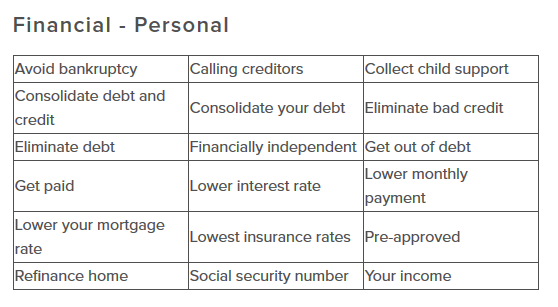
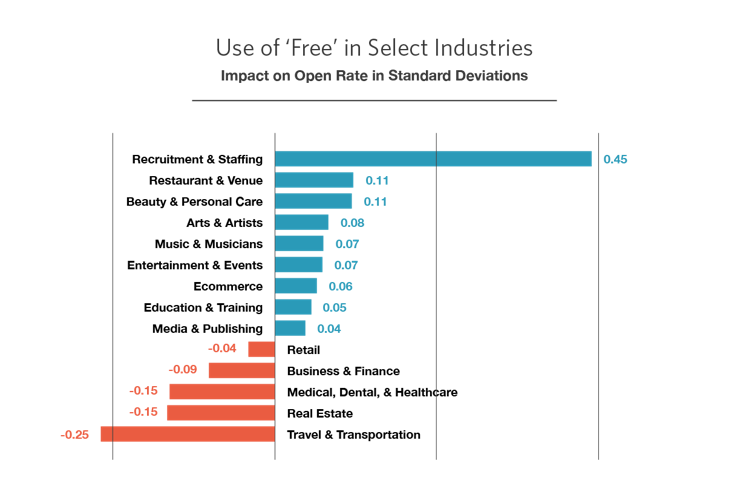



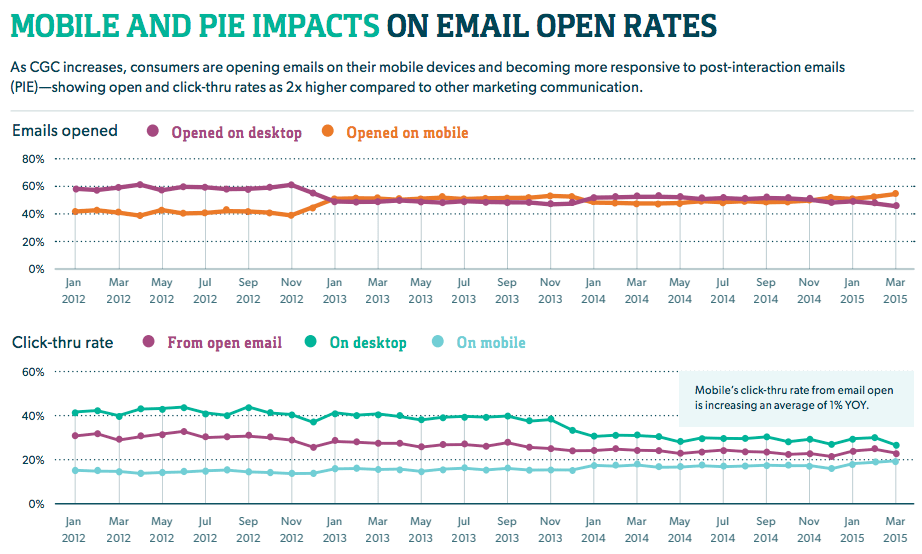
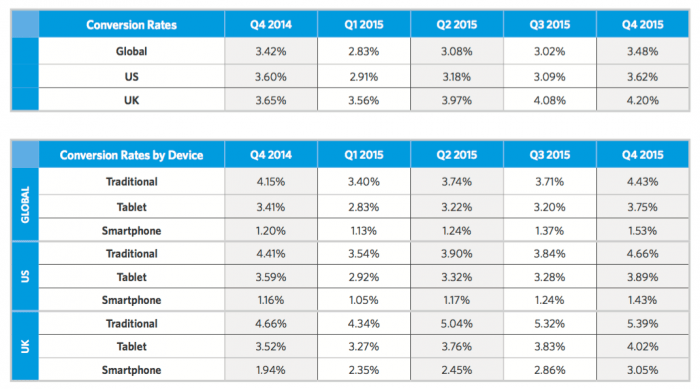
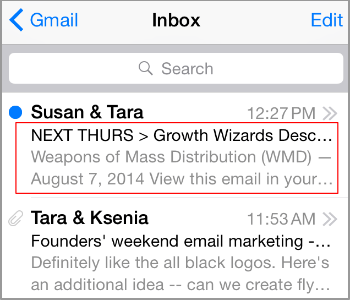
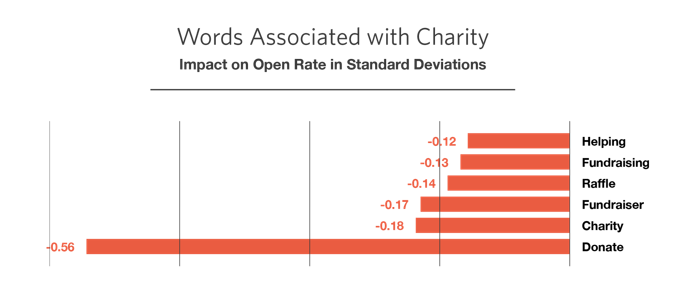
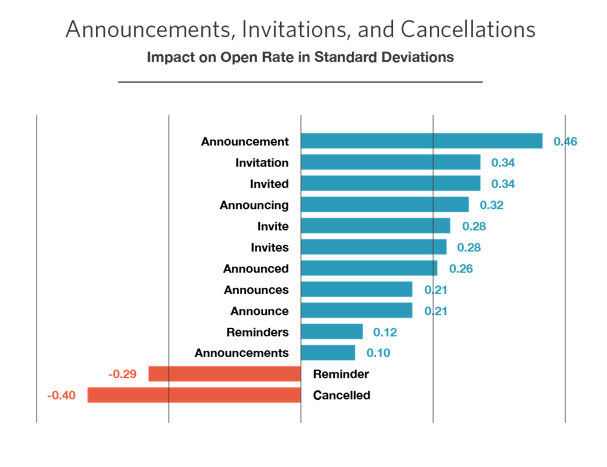


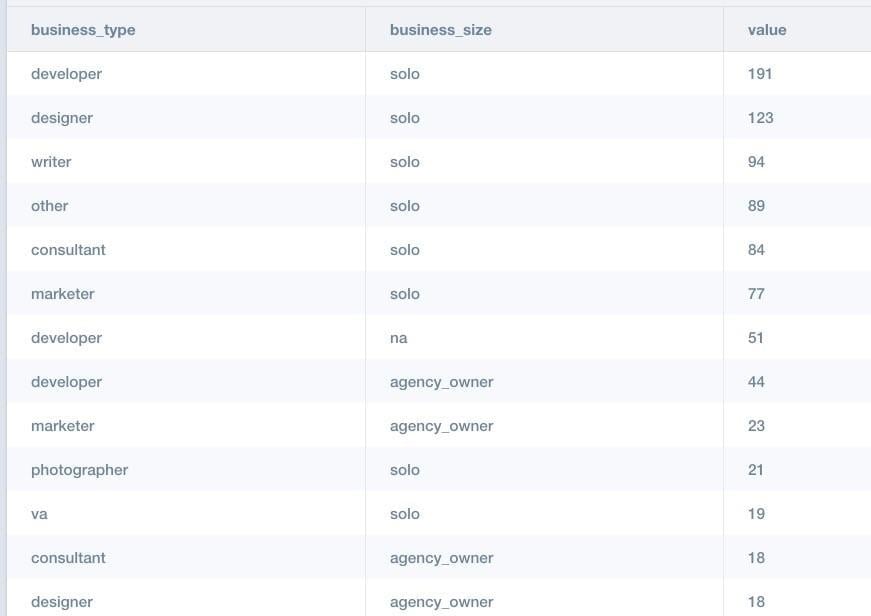
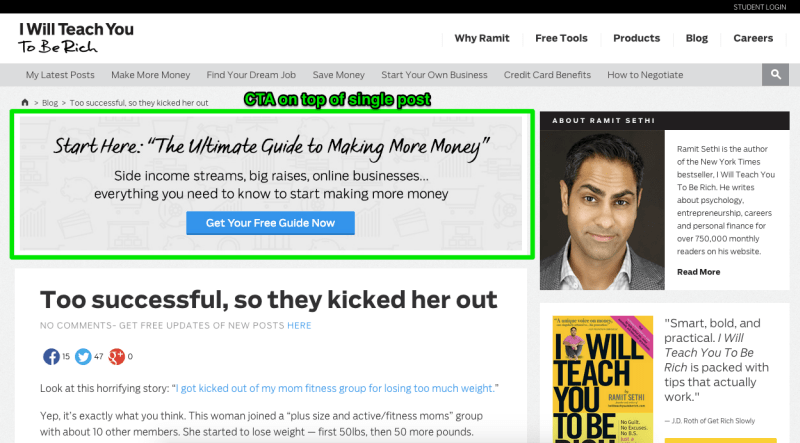


0 Comments